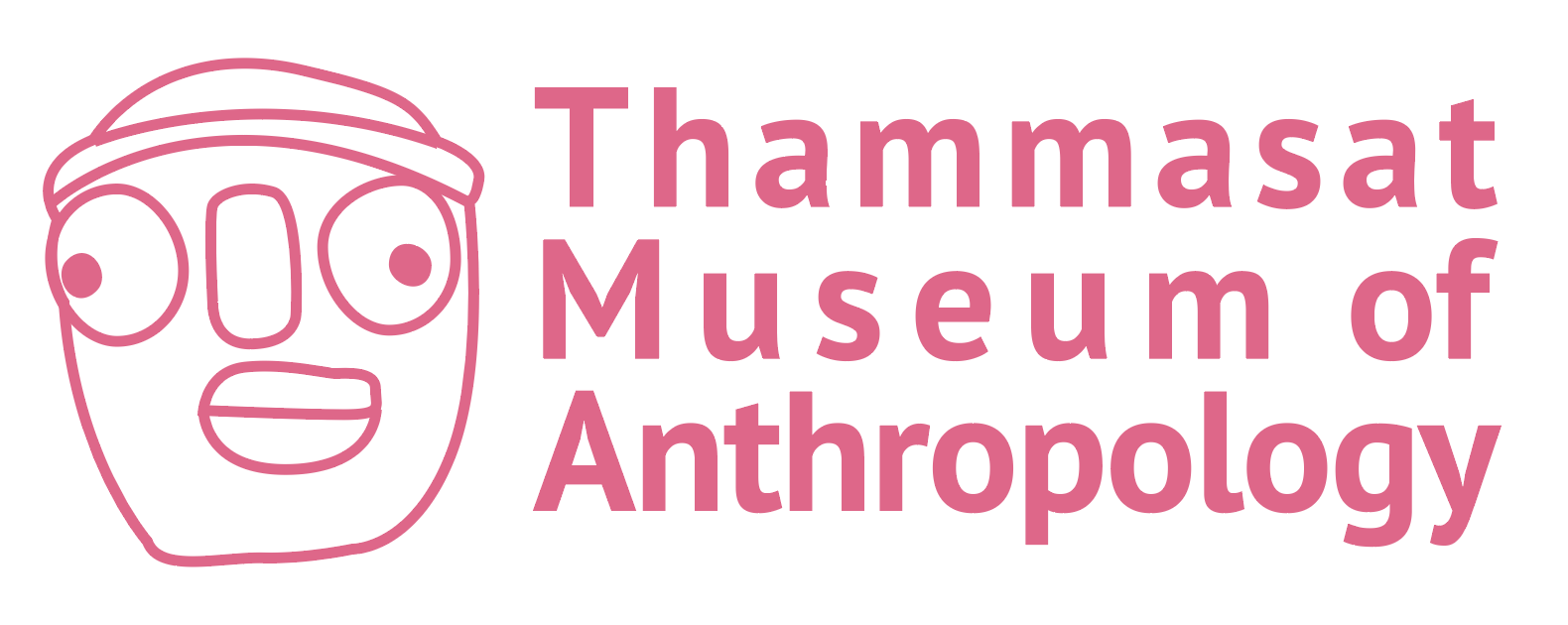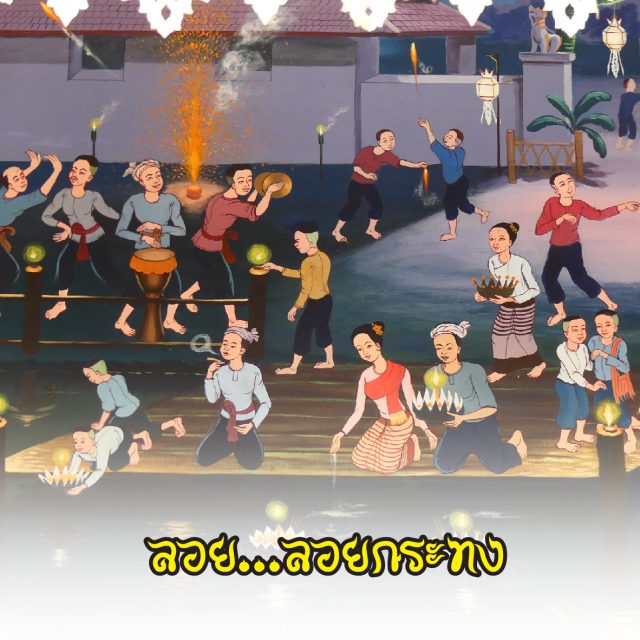Loy Krathong is an ancient tradition that takes place on the 15th day of the waxing moon of the 12th lunar month each year. The name “Loy Krathong” does not appear explicitly in Sukhothai era stone inscriptions. However, King Ramkhamhaeng’s inscription mentions “Phao Tian Lhen Fai” (Burning Candles, Playing with Fire), which broadly means making merit and paying respect to the Buddha. Early documents and literature from the Ayutthaya period only mention the terms “Chak Khom” (pulling lanterns), “Loy Khom” (floating lanterns), “Khwaen Khom” (hanging lanterns), and “Lhod Chut Loy Khom Long Nham” (lowering sets of floating lanterns into the water) in Brahmin court ceremonies. Even in the Thonburi period, this name did not exist. It only starts to be documented in the early Rattanakosin era in the Royal Chronicles of the Reign of King Rama III in Chao Phraya Thiphakorawong’s version and in the story of Nang Nopphamat, a composition by King Rama III. This means that the term “Loy Krathong” only appeared in the early Rattanakosin period (Loy Krathong, 2014). Loy Krathong is one of Thailand’s important traditions, with practices that vary according to the beliefs of each region and local.
Northern Region – The Loy Krathong tradition in the Northern Region is held on the 15th day of the waxing moon of the 12th lunar month and is celebrated as a major festival in many provinces. Tak province’s “Loy Krathong Sai,” for example, is a long-standing tradition that differs from other provinces, as coconut shells are used as krathongs and floated along the Ping River. Other activities include ancient longboat racing, the Nang Nopphamat beauty pageant, and a procession of Loy Krathong Sai floats. Meanwhile, Chiang Mai province has the “Yi Peng” tradition, which is an ancient Lanna custom involving the release of sky lanterns to worship the Phra That Chulamani in heaven. Sukhothai province, on the other hand, has a tradition called “Phao Tian Lhen Fai” (Burning Candles, Playing with Fire). The event includes ceremonies to pay homage to Mae Ya and King Ramkhamhaeng, as well as cultural and Thai music performances, a pulling lantern competition, and the “Khao Khwan Wan Lhen Fai” event, among others (Loy Krathong, 2014).
Northeastern Region – The Loy Krathong tradition in the Northeastern region is called the “Lai Ruea Fai” (Flowing Fire Boats) tradition, also known as Loy Long or Ploi Heua Fai. It takes place from the 15th day of the waxing moon to the 1st day of the waning moon of the 11th lunar month. It is an important Isan tradition that is still practiced today, with many provinces in the Northeast, such as Si Sa Ket, Sakon Nakhon, Nakhon Phanom, Nong Khai, Loei, Maha Sarakham, and Ubon Ratchathani, holding grand festivals. The Lai Ruea Fai tradition is rooted in various beliefs, including the worship of the Buddha’s footprint on the banks of the Narmada River, paying homage to the Triple Gem, and seeking forgiveness from and honoring Phra Mae Khongkha (Ganga). Before the end of Buddhist Lent, there will be merit-making ceremonies, alms offerings, traditional ramwong dances (Thai folk dances), prayers, and sermons. In the evening, the fire boats are lit and released to float down the river (Loy Krathong, 2014).
Central Region – The Loy Krathong tradition in the Central Region is held on the full moon of the 11th or 12th lunar month. It’s a popular tradition that has been practiced continuously from the past to the present. In Bangkok, the event is held mainly to promote tourism, and people float their Krathongs on the Chao Phraya River or in canals near their residences. Ayutthaya province hosts a grand Ancient Capital Loy Krathong festival at the Ayutthaya Historical Park, and there is also a Loy Krathong ceremony at the Bang Sai Royal Folk Arts and Crafts Centre. The Loy Krathong tradition also reflects the prosperity of the ancient city of Ayutthaya and the abundance of the Chao Phraya River. The festival features Thai food competitions, fireworks displays, and sky lanterns, among other activities (Loy Krathong, 2014).
Southern Region – It is believed that the Loy Krathong tradition in the Southern Region represents floating a raft or boat that can help ward off bad luck or illness. This involves using a banana stalk to create a raft, which is filled with the hair, nails, flowers, incense sticks, candles, and money of the person floating it, and then released onto a river. In Pattani province, Loy Krathong Day falls on the 15th day of the waxing moon of the 12th lunar month each year. The event is led by a procession around the city and also features krathong contests, music performances, and various forms of entertainment.
ภาพจิตรกรรมฝาผนัง ประเพณีลอยกระทง จากคลังภาพจิตรกรรมฝาผนัง: อู่ทอง ประศาสน์วินิจฉัย
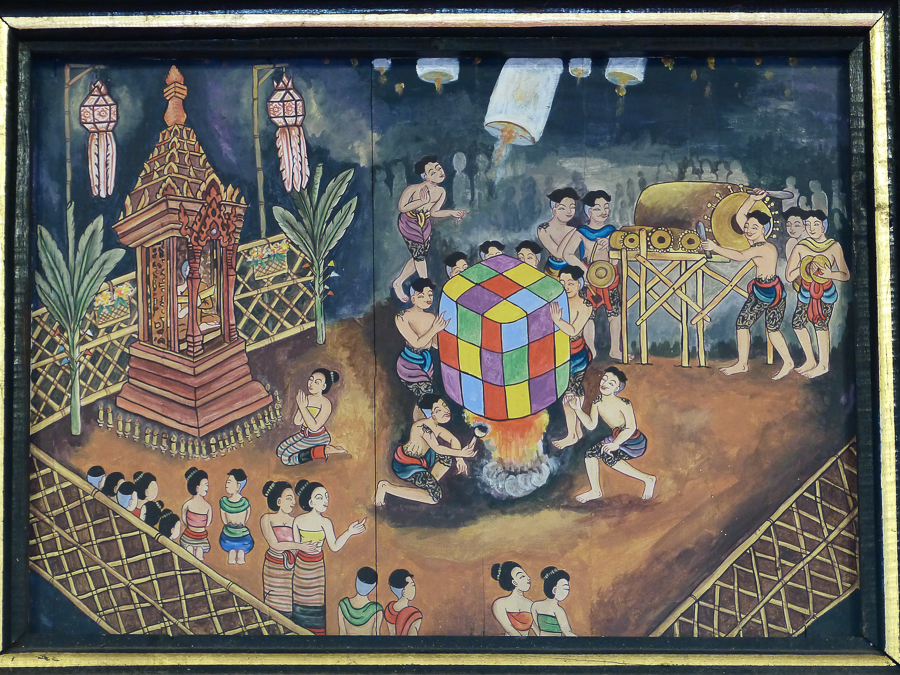
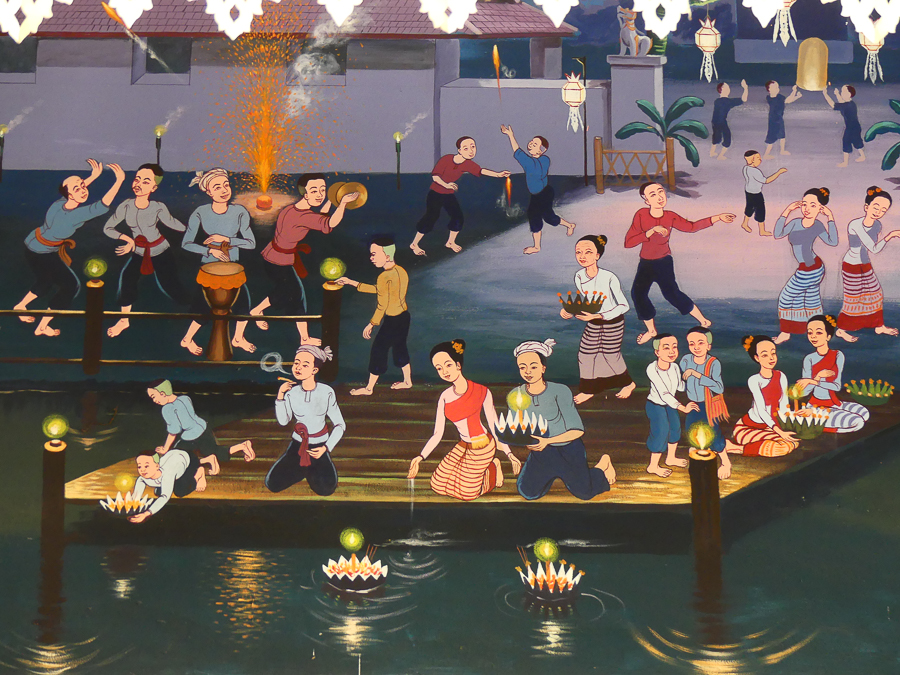
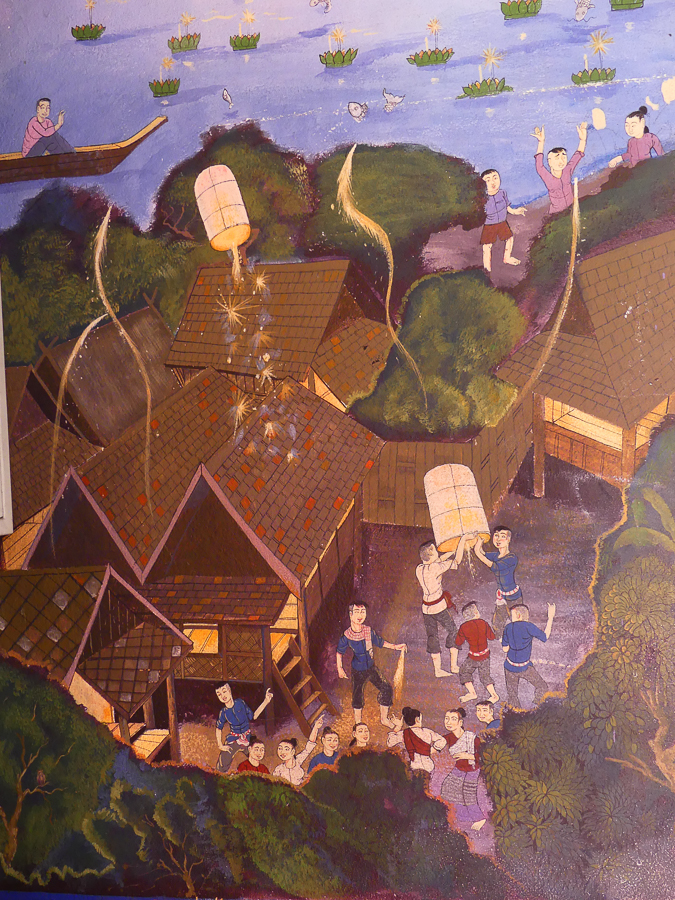
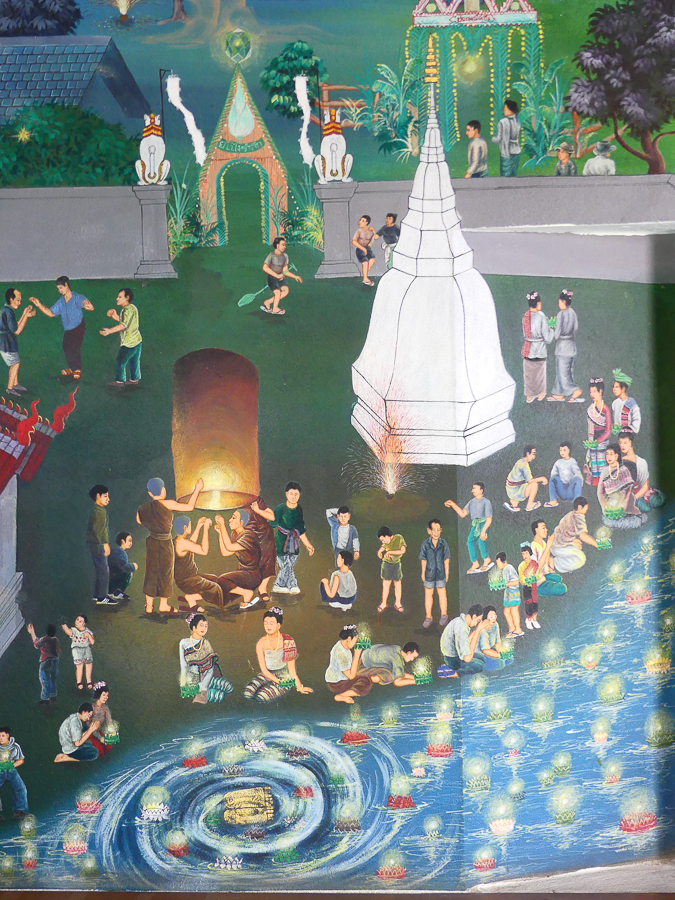
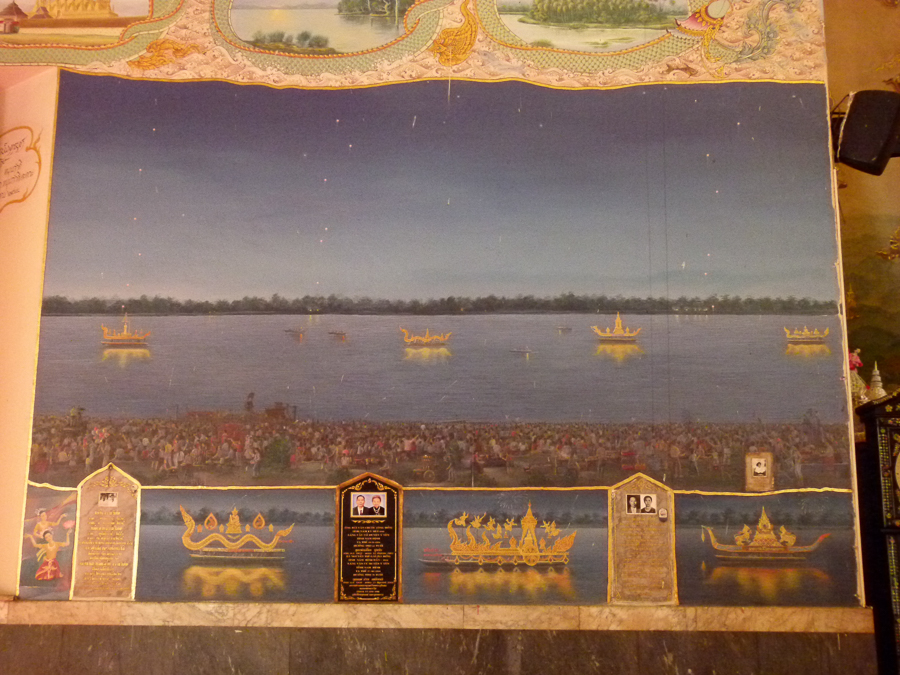
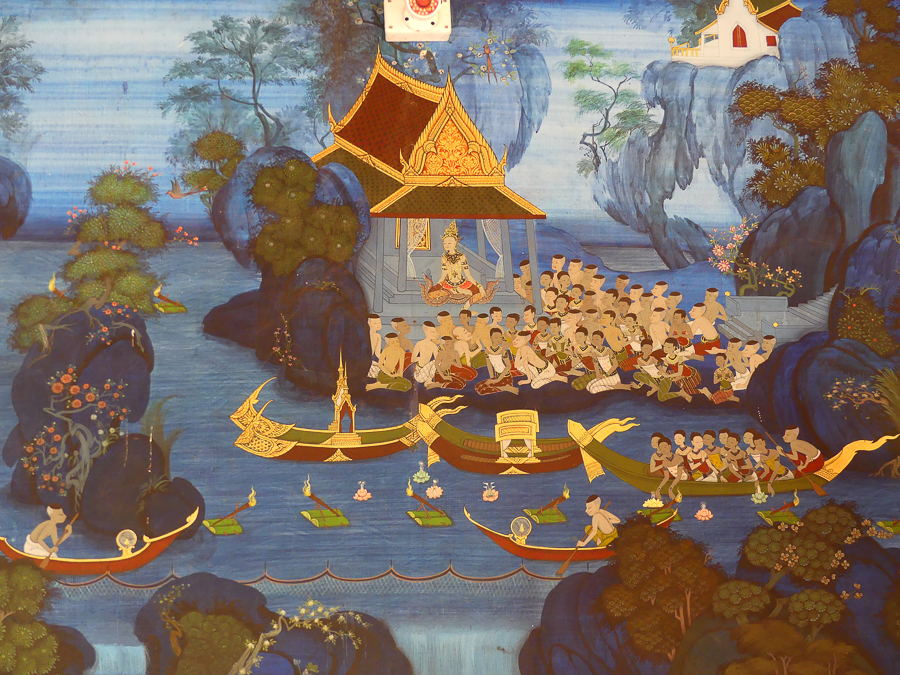
Reference
Department of Cultural Promotion, Ministry of Culture. (2014). Loy Krathong. Loy Krathong, 3-18.
https://book.culture.go.th/newbook/day/loy.pdf
Exhibition content by: Thidapach Charoenphatthanathon, student of the Faculty of Sociology and Anthropology, Thammasat University
